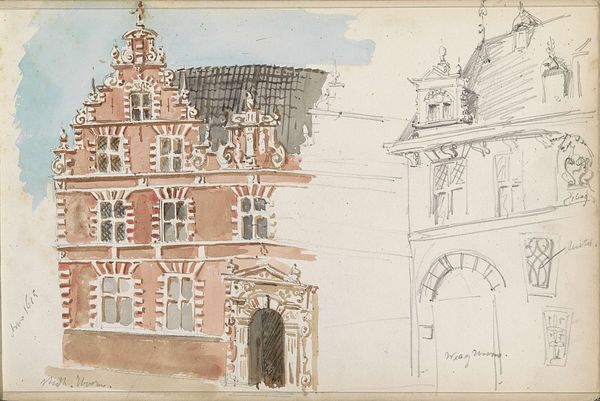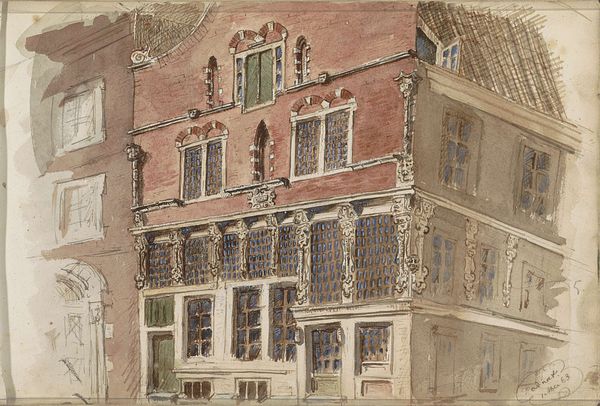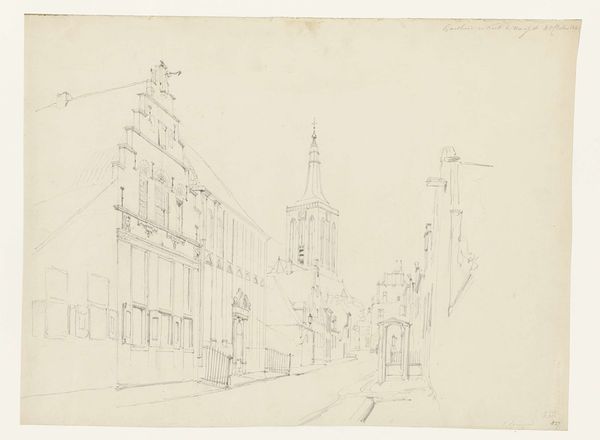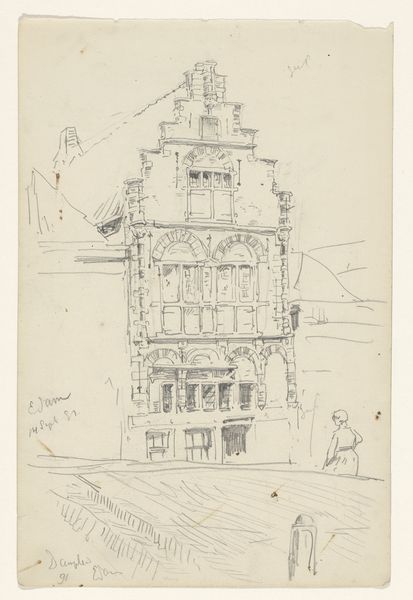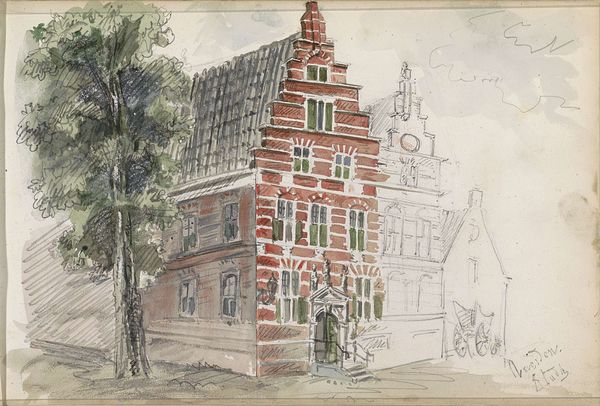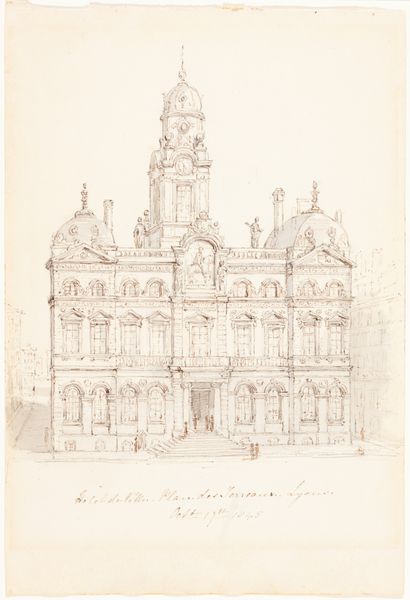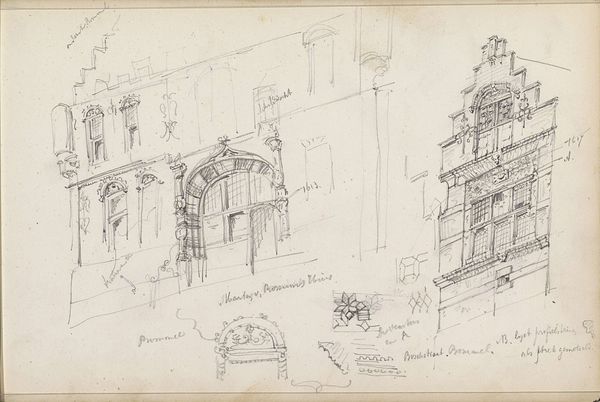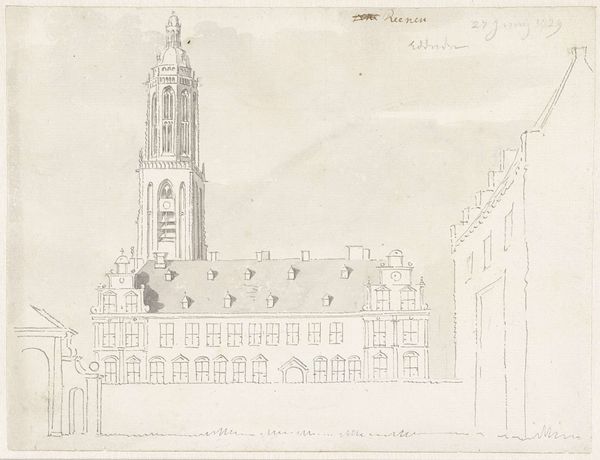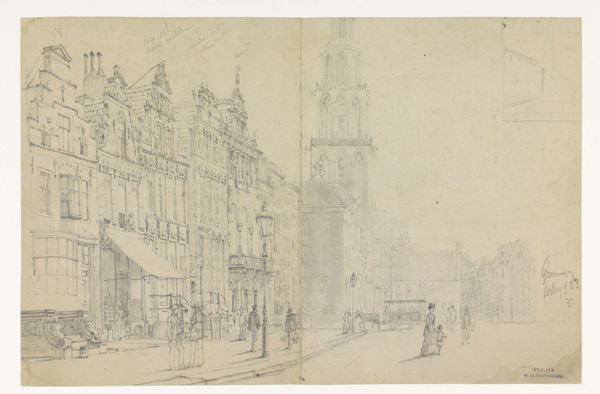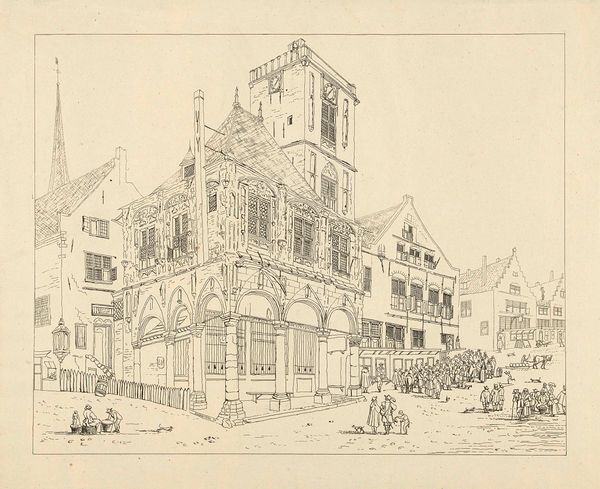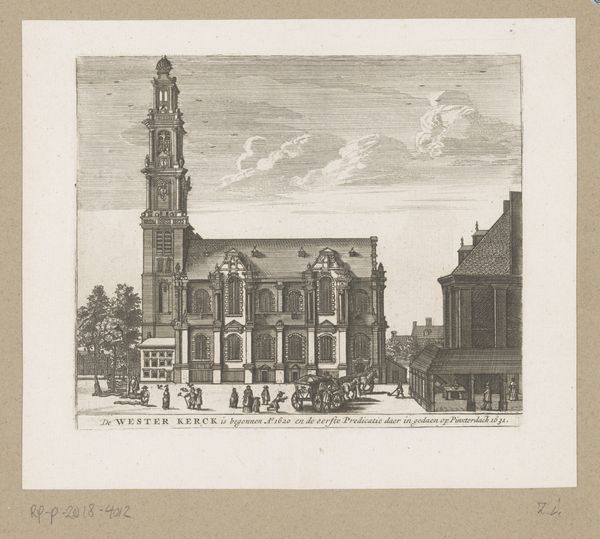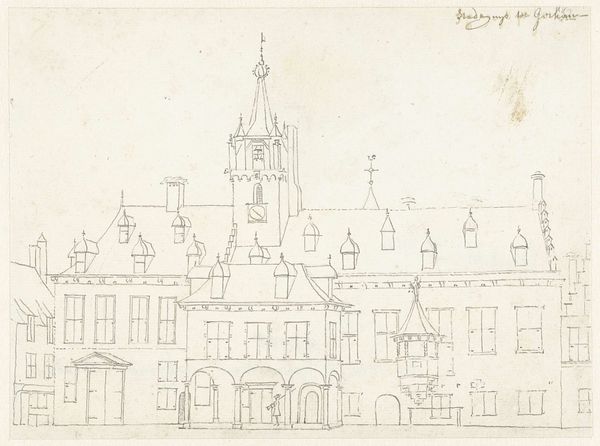
drawing, watercolor, pencil, architecture
#
drawing
#
etching
#
watercolor
#
pencil
#
cityscape
#
architecture
Copyright: Rijks Museum: Open Domain
Curator: This work, by Isaac Gosschalk, offers a glimpse into 1866 Amsterdam, titled "Panden aan de Nieuwmarkt te Amsterdam". The rendering uses pencil and watercolor. What's your immediate take? Editor: It strikes me as both precise and ghostly. The skeletal structure on the left has such stark, linear clarity. But then, that wash of pale color, like a faded memory, adds an emotional weight. Curator: Exactly. It's the detail alongside the incompleteness that fascinates. That precision speaks to the importance of architectural representation at the time – how cities documented their changing skylines. But those incomplete parts... they evoke the transient nature of urban life. Editor: The "Billiard" signage hints at the burgeoning leisure activities taking place at the time, that moment where the Nieuwmarkt shifts to this commerce space where folks gathered and socialized. Also, there's a stage set to the side. It’s subtle but gives us so much info. Curator: Interesting. A lot can be made of it as well. Billiards wasn’t just leisure, though, for some it represented moral decline because it can be associated with gambling, which takes on a whole different meaning than simply leisure. Editor: So, those incomplete parts. Are they suggesting fragility, perhaps? That the prosperity wasn’t necessarily long-term? Curator: It suggests more than simple "fragility," for I see the ghost buildings also functioning as mnemonic devices. If you look, the windows form these very distinctive grids—patterns the public would use to remember and assign narratives of both prosperity and risk, like that potential moral failure you mentioned. Gosschalk invites us into their process of cultural association. Editor: A process we now inherit by simply observing his handiwork! He has inadvertently given the key to interpreting Amsterdam during the industrial period and what values are on trial during this cultural shift. Curator: Precisely! He captures Amsterdam at the precipice of significant change, revealing what remains of a vanishing architectural landscape and pointing to future conflicts of a culture in change. Editor: It gives us pause about whether change is really “progress.” Thank you!
Comments
No comments
Be the first to comment and join the conversation on the ultimate creative platform.
